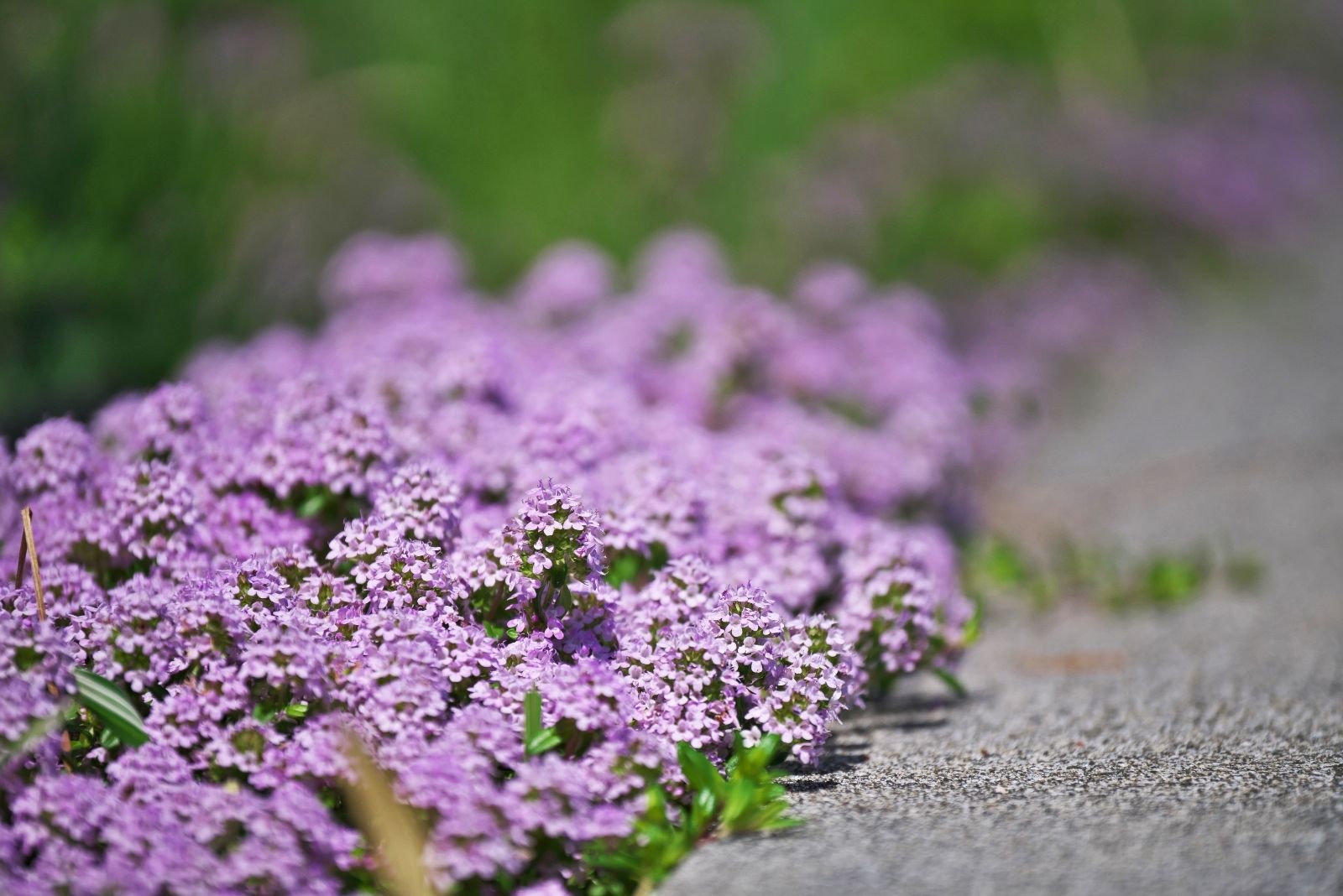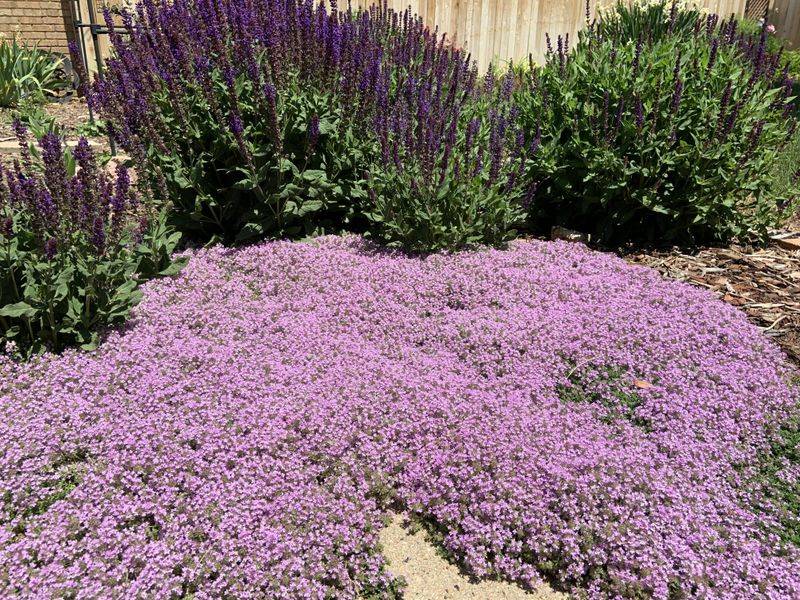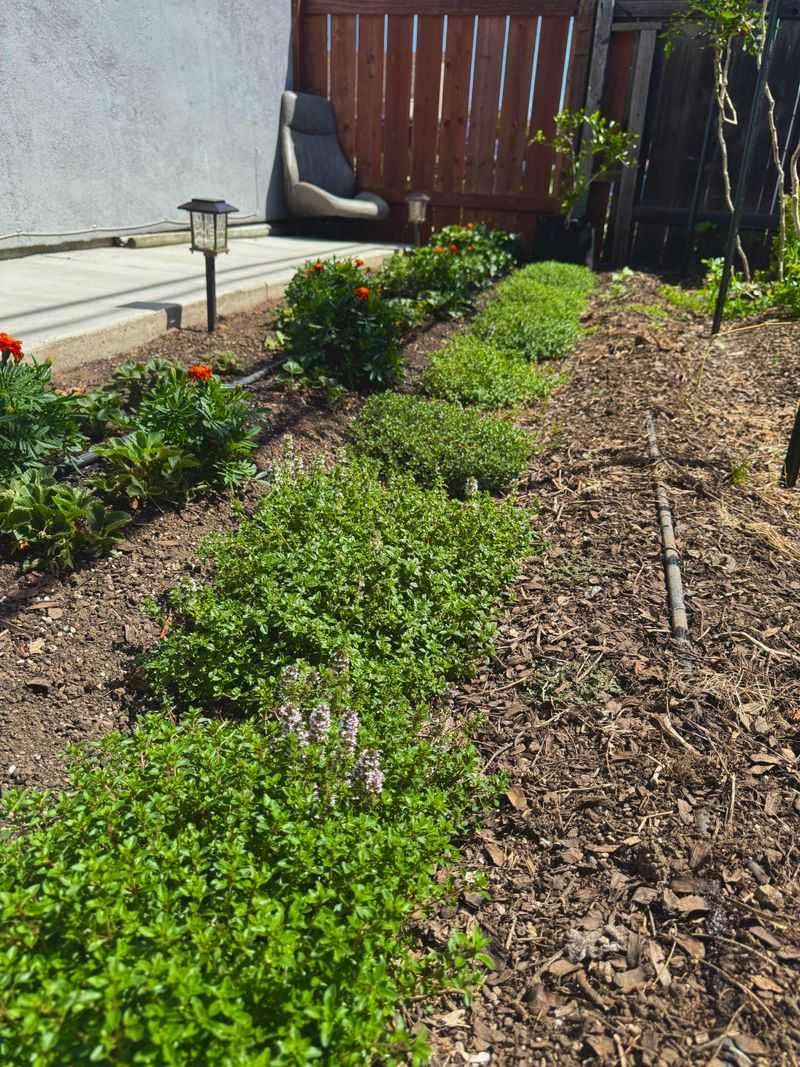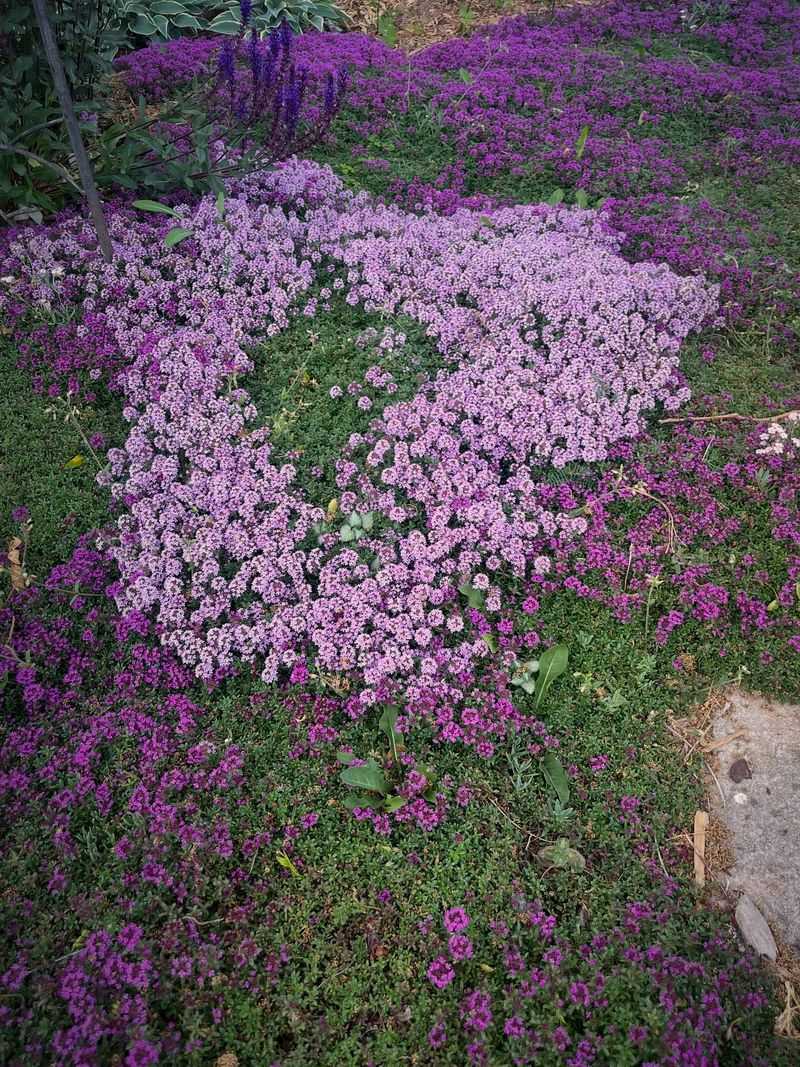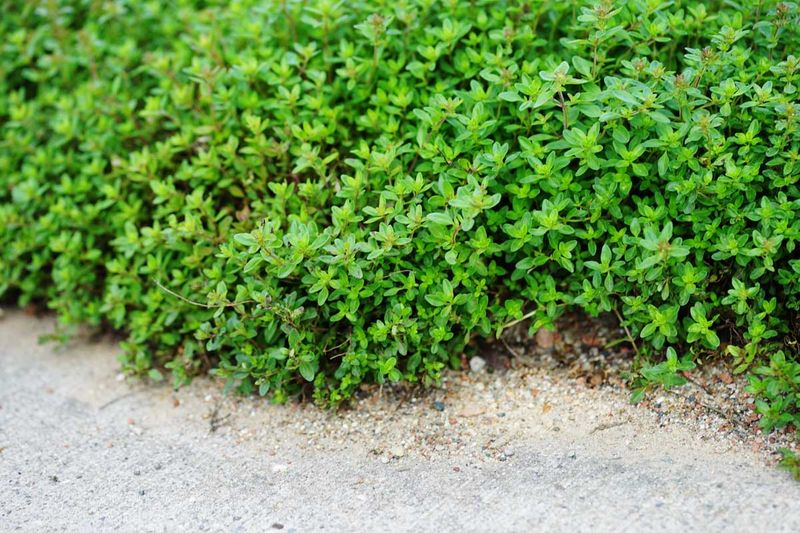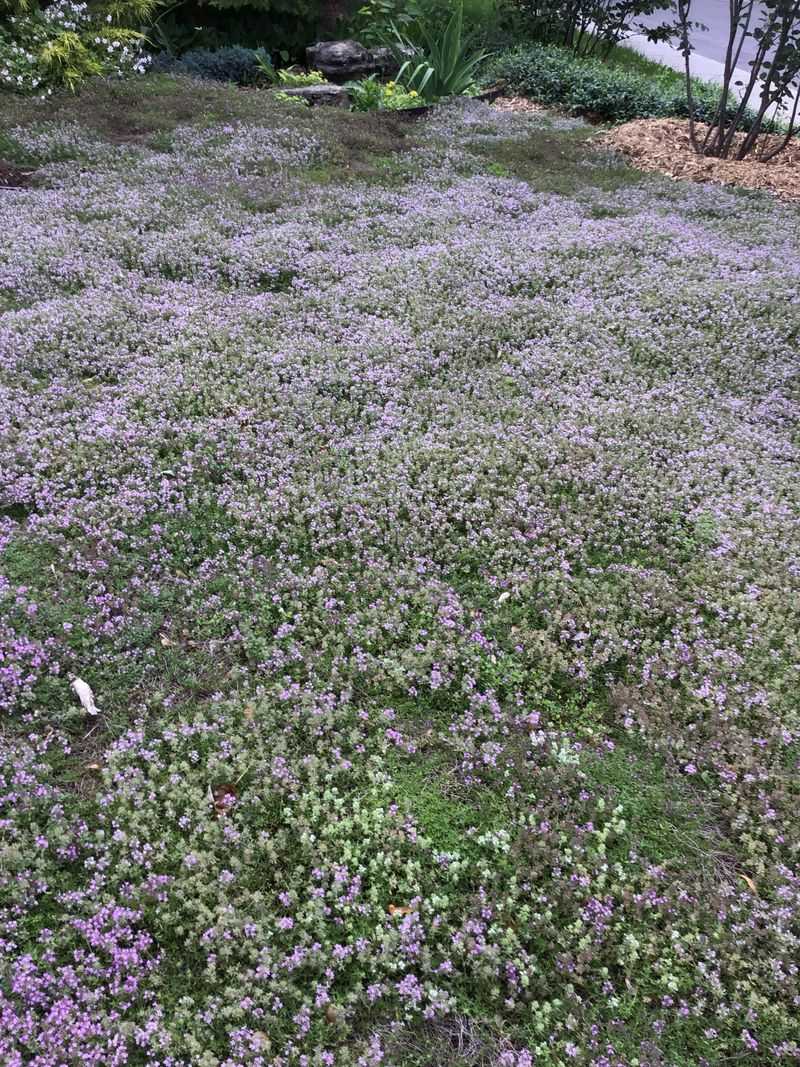Looking for a groundcover that can handle foot traffic and still keep your Washington yard looking great? Creeping thyme might be just the thing.
This low-growing herb forms a fragrant, soft carpet that stays green most of the year. In fact, it thrives under light pressure—getting even better when you walk on it.
I’ve found it’s a smart swap for traditional grass or a charming filler between stepping stones. It’s tough, low-maintenance, and adds beauty without the hassle.
1. Handles Foot Traffic Like A Champion
Most groundcovers get damaged when people step on them repeatedly, but creeping thyme actually thrives under light to moderate foot traffic.
The plant releases its pleasant fragrance each time someone walks across it, turning an ordinary stroll into a sensory experience. Washington homeowners find this particularly useful for filling gaps between stepping stones or creating informal pathways.
The stems are flexible enough to bounce back after being stepped on, making it ideal for active yards where kids and pets play regularly without causing permanent damage.
2. Thrives In Washington’s Climate Conditions
Washington’s mild, wet winters and moderate summers create perfect conditions for creeping thyme to flourish year-round. Unlike many groundcovers that struggle with the region’s moisture levels, this hardy herb adapts beautifully to the Pacific Northwest climate.
The plant handles western Washington’s rainy season without developing root rot, which kills many other low-growing options.
During drier eastern Washington summers, creeping thyme shows impressive drought tolerance once established, requiring minimal supplemental watering compared to traditional lawns that demand constant irrigation.
3. Requires Almost Zero Maintenance Effort
Say goodbye to weekend mowing sessions and expensive lawn equipment. Creeping thyme grows only 2-4 inches tall and never needs cutting, saving you countless hours of yard work throughout the growing season.
Fertilizing becomes optional since this herb thrives in poor soil conditions that would stress other plants. Weeds struggle to penetrate the dense mat once established, reducing your need for constant weeding.
Washington gardeners appreciate having more free time to enjoy their yards instead of constantly maintaining them with traditional grass lawns.
4. Creates Beautiful Fragrance When Stepped On
Walking barefoot across creeping thyme releases aromatic oils that smell like a blend of mint and lemon. The scent naturally repels certain pests while creating a pleasant outdoor atmosphere that synthetic air fresheners cannot match.
Kids particularly love the interactive nature of a fragrant groundcover that responds to their movement. Evening walks through the garden become more enjoyable when each step releases waves of herbal fragrance.
Washington residents often plant creeping thyme near patios and seating areas where the natural aromatherapy enhances outdoor relaxation time.
5. Attracts Beneficial Pollinators To Your Yard
During late spring and early summer, creeping thyme produces tiny purple or pink flowers that bees absolutely adore. Supporting pollinator populations has become increasingly important as native bee species face habitat loss across the Pacific Northwest.
Butterflies and beneficial insects also visit these blooms regularly, creating a mini ecosystem in your yard. Washington gardeners who grow vegetables nearby notice improved crop yields thanks to the increased pollinator activity.
The flowering period lasts several weeks, providing consistent food sources when other early bloomers have already faded away.
6. Stays Green Through Mild Washington Winters
While traditional lawns turn brown and dormant during colder months, creeping thyme maintains its color through Washington’s typically mild winters. The evergreen foliage provides visual interest when most other plants have died back or gone dormant.
Western Washington’s moderate temperatures rarely drop low enough to damage this cold-hardy herb. Even during occasional freezes, the plant quickly recovers once temperatures rise again.
Homeowners appreciate having a yard that looks intentional and cared-for throughout the year instead of resembling an abandoned field during the off-season months.
7. Prevents Soil Erosion On Slopes Naturally
Washington’s hilly terrain and heavy rainfall create perfect conditions for soil erosion problems that wash away topsoil and damage landscapes. Creeping thyme’s extensive root system grabs onto soil particles, holding them in place even during intense rainstorms.
The dense mat of stems and leaves slows water runoff, allowing moisture to soak into the ground instead of rushing downhill.
Sloped yards that once required expensive retaining walls can often be stabilized with strategic plantings of this groundcover. Property owners save money while creating attractive, functional landscapes that work with nature.
8. Costs Less Than Traditional Grass Lawns
Traditional lawns demand constant investments in fertilizers, weed killers, water bills, and equipment maintenance that add up quickly over time. Creeping thyme eliminates most of these ongoing expenses once the initial planting establishes itself successfully.
Water consumption drops dramatically since mature plants tolerate dry periods without irrigation. You won’t need expensive lawn services or specialized equipment to keep your yard looking presentable.
Washington homeowners typically recover their initial investment within two to three years through reduced maintenance costs, making creeping thyme both environmentally friendly and budget-conscious.

